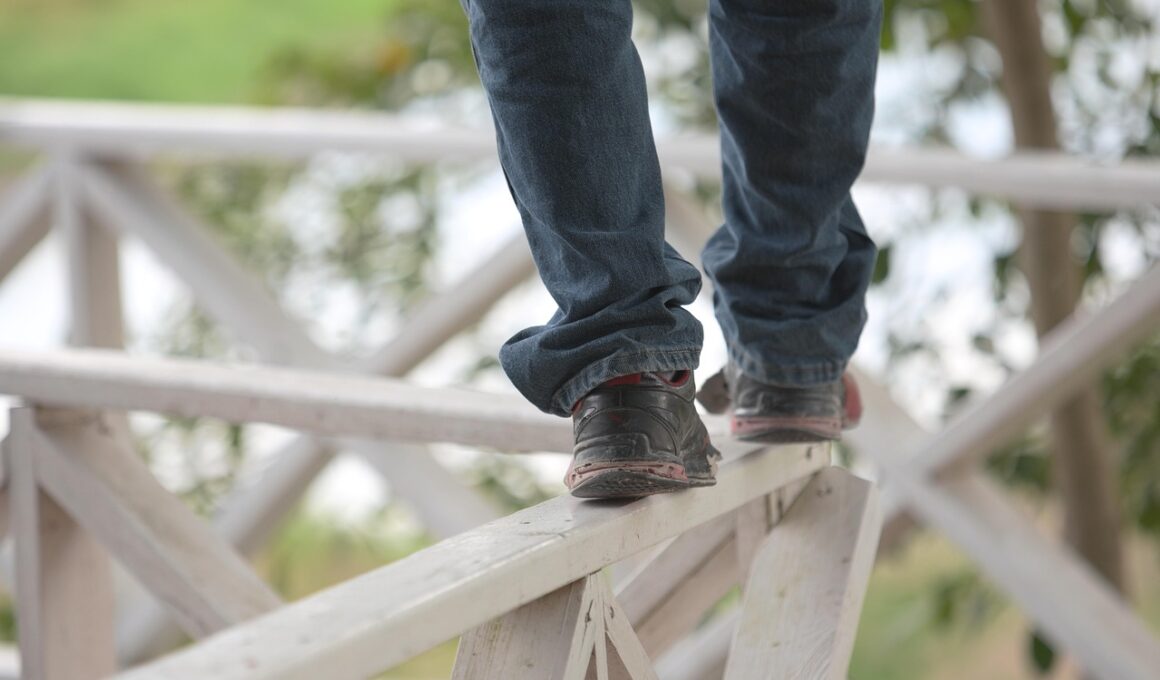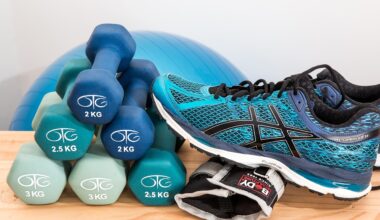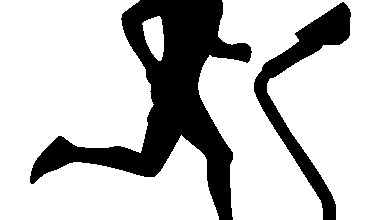The Role of Flexibility in Parkour Balance Training
Flexibility plays an integral role in the discipline of parkour, especially when it comes to balance training. This essential component helps practitioners distribute their weight evenly while traversing complex and varied terrains. A strong foundation of flexibility allows individuals to adapt their body movements with ease, thereby enhancing their coordination and stability. As a result, parkour enthusiasts can execute a wide range of techniques, from precision jumps to intricate landings. To incorporate flexibility into balance drills, individuals can perform static and dynamic stretching exercises aimed at improving their range of motion. Activities such as hip openers, leg swings, and calf stretches can contribute enormously to overall performance. Moreover, practicing yoga can also significantly influence one’s body awareness and stability. Maintaining flexibility not only aids in executing physical moves but reduces the risk of injury during training. Flexibility should be seen as a beneficial aspect of parkour training, aligning with balance and agility. Parkour practitioners, therefore, must prioritize flexibility to achieve heightened safety and skill while engaging in their work. Combining these elements results in a more proficient and confident parkour athlete.
By enhancing flexibility, parkour athletes can perform more dynamic movements without compromising their balance. Flexibility training encourages improved blood circulation, which results in better nutrient delivery to the muscles. Engaging in activities specifically designed to enhance flexibility—such as static and dynamic stretches—can begin to strengthen the muscles responsible for maintaining balance. By focusing on key muscle groups such as the hips, hamstrings, and calves, athletes can build muscle endurance and stability. Effective stretching routines can be implemented during warm-ups or cool-downs. Some common exercises include leg stretches and hip flexor stretches. Parkour athletes often explore various techniques, which could include warming up with light jogging followed by deep lunges or side lunges. These movements effectively engage the necessary muscle groups, preparing them for more advanced techniques. Incorporating balance drills can also solidify the benefits gained from flexibility training. This combination of flexibility and coordination ultimately elevates a practitioner’s confidence and decision-making capabilities during parkour sessions. As a result, athletes are better equipped to tackle challenges, boost their performance, and enjoy the thrill of freestanding and dynamic movements.
Benefits of Flexibility in Parkour
The benefits of flexibility extend beyond mere physical movement, playing a crucial role in enhancing mental focus as well. Flexible muscles contribute to better body mechanics, leading to improved posture, which is imperative during complex parkour maneuvers. A heightened awareness of body positioning assists athletes in maintaining balance and stability when jumping, landing, or transitioning between moves. A flexible body can better adapt to the various impacts and angles experienced during training, helping to absorb shocks and distribute forces uniformly. This adaptation allows for smoother transitions and prepares muscles and joints for frequent high-impact activity. Moreover, flexibility fosters resilience, reducing the incidence of strains or sprains that can occur when pushing boundaries. Regular training in flexibility not only aids skill development but also develops an athlete’s confidence. A confident parkour practitioner is more willing to push personal boundaries and experiment with new skills. Ultimately, embracing flexibility as an integral part of balance training signifies a commitment to explore personal limits safely. By recognizing these benefits, athletes can enhance their engaging journey in the world of parkour.
Incorporating flexibility training into a parkour routine requires both consistency and variety in exercises. Focusing primarily on static stretching may not engage the full potential of the muscles needed for parkour techniques. Instead, a balanced approach that combines dynamic stretching with static exercises proves effective in improving flexibility. High-intensity interval training can also be beneficial in building strength while promoting range of motion. Functional movements, such as deep squats and lateral lunges, should be integral to warm-up routines. These exercises help prepare energy systems for the more intense workout that follows. Practitioners are encouraged also to seek guidance from experienced trainers. Professional input ensures proper technique is adhered to, minimizing the risk of injury during personal training sessions. Furthermore, utilizing supportive equipment, such as resistance bands and foam rollers, can help in rehabilitation and enhancing flexibility sessions. By committing to a regular routine, practitioners will likely experience noticeable improvements, translating to better overall performance. Engaging in a community dedicated to mobility and flexibility will also encourage progress. Having accountability and support aids in adherence to structured training, enhancing motivation and commitment.
Techniques to Enhance Flexibility
Several techniques can effectively enhance flexibility, tailored for parkour enthusiasts seeking improved performance. The foundation of these techniques lies in stretching, which can be categorized into static, dynamic, and PNF (proprioceptive neuromuscular facilitation) stretching. Static stretching involves holding a stretch for a prolonged period, targeting specific muscle groups that affect balance. Dynamic stretching, on the other hand, comprises controlled movements that take joints through their full range of motion, essential for preparing the body for physical activity. PNF stretching combines passive stretching and isometric contractions, activating the muscles to achieve greater flexibility. Athletes often practice post-workout stretches to reduce stiffness. Additionally, drills focusing on movements specific to parkour—such as wall runs or jump landings—enhance flexibility in practical scenarios. Another effective method to elevate flexibility includes engaging in martial arts or dance classes. These disciplines emphasize control and fluidity while demanding specific stretches relevant to their movements. By continually exploring new techniques and diversifying training methods, parkour athletes can optimize flexibility and maintain heightened performance levels during workouts.
Furthermore, understanding the importance of warming up and cooling down cannot be overlooked in flexibility training. Proper warm-up routines increase blood flow to muscles while enhancing range of motion, which is crucial for preventing injury. This aspect emphasizes the need for flexibility training within parkour practice. Furthermore, cooling down post-workout helps restore muscle elasticity and limits soreness after intense sessions. Cooling activities might include gentle stretching, slow-paced walking, or foam rolling. Engaging in a dedicated routine will ensure muscle recovery and likelihood of maintaining flexibility throughout subsequent workouts. Athletes should employ a systematic approach in their training, gradually upping the intensity to adapt their bodies without causing harm. By listening to their bodies and respecting limits, practitioners can prevent the risk of injuries that could impede progress. This thoughtful approach fosters a deeper connection to their movement while enhancing overall performance levels. In summary, flexibility training should be an ongoing investment in a parkour athlete’s routine. It enriches balance training while promoting a holistic sense of wellness.
Final Thoughts
In closing, flexibility is paramount in parkour practices, significantly influencing balance and coordination. Athletes often discover that integrating flexibility training into their routines leads to improved efficiency and skill execution. It allows for smoother movements, effectively increasing their skill set, ultimately aiding both technical and creative aspects of parkour. Flexibility not only boosts capacity to execute advanced techniques, but it also contributes to injury prevention. This essential component plays a defining role in overall training, making a concerted effort toward enhancing flexibility worthwhile. By recognizing its importance, athletes can structure their training sessions to prioritize flexibility alongside strength and agility. The rewards of this emphasis become clear during practice, ultimately translating to enhanced performance in various parkour contexts. Embracing flexibility in every session fosters a legacy of holistic improvement. Therefore, a consistent incorporation of flexibility drills and techniques will elevate any parkour practitioner’s experience, ensuring sustained progression and enjoyment. With dedication and focus on flexibility, athletes engage more profoundly with their craft, leading to greater accomplishments, lasting satisfaction, and a deeper love for this compelling community of movement enthusiasts.
Through the consistent application of balance and coordination drills, athletes actively cultivate an impressive array of skills, with flexibility being a core element throughout their journey. Having a structured routine that centers on flexibility includes dynamic stretches, yoga practices, and functional movement exercises. Athletes often find that revisiting their goals can inspire fresh perspectives and creativity in their training. A commitment to improvement fosters resilience, making the journey enjoyable through trial and error and discovery. Embracing cross-training in other disciplines, whether dance or martial arts, can introduce novel skills that enhance flexibility and performance in parkour. The synergistic relationship fostered through practice reflects individual aspirations within parkour practice. Thus, participants are encouraged to assess their flexibility regularly, seeking opportunities for growth. Adaptive training ensures present challenges. With a supportive community backing their training efforts, parkour athletes will often push their boundaries and challenge their limits. The continual pursuit of balance and coordination, alongside flexibility, ultimately results in a rewarding experience rooted in determination and growth, ensuring broader participation in this exciting lifestyle.


